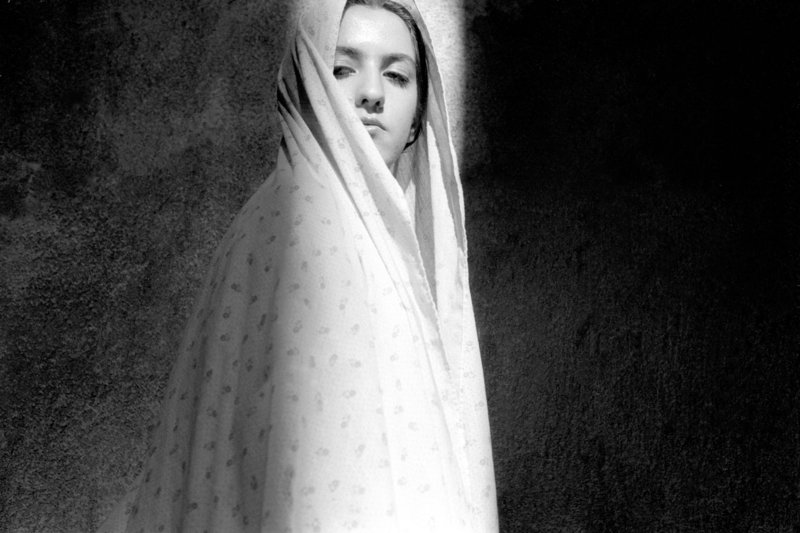As relations between the United States and Iran edge slowly toward a possible thaw, a new photography exhibition at the University of Southern Maine offers a rare inside view of Iran.
“Persian Visions: Contemporary Photography from Iran” includes nearly 60 photographs and two videos at the USM Art Gallery in Gorham and the Area Gallery on the USM campus in Portland. The exhibition represents the first broad survey of Iranian photography to travel to the United States, said Robert Silberman, a visiting scholar at USM from the University of Minnesota.
It was organized by the Tehran Museum of Contemporary Art and the University of Minnesota, and has been touring the U.S. for several years.
“Iran is a very complex society,” said Silberman, who wrote the catalog essay for the exhibition. “These photographers help reveal it.”
The images capture street scenes, family life and lifestyles, and demonstrate the sophistication and courage of the 20 artists whose work is represented, said Reza Jalali, who was born in Iran and coordinates the USM Office of Multicultural Student Affairs.
“Above all else, I think what this exhibition demonstrates is that Iranians are human beings, capable of creating art, of feeling pain, of knowing love. They are just like us,” Jalali said.
Most of the images in the exhibition are in black-and-white, and the overwhelming mood is dark and blurry. There are photographs of women in veils, of missing family members, and birds in flight. Most of the work is figurative — photographs of people — and there are few photographs that give a sense of the landscape.
There is a sense of oppression and intrigue, as well as beauty and allure, said Carolyn Eyler, director of exhibitions at USM.
“We all get a sense that the mood just feels dark,” she said. “I almost get the sense that there is someone in the room next door with a muffled sound. There’s a lot of deliberate mystery.”
On the other hand, Jalali calls attention to a color photograph of a young man playing the accordion on a Tehran street, with snowflakes falling.
“I look at that, and it could be in France,” he said. “It could be the Left Bank of Paris, and a musician who is broke playing his instrument for tips.”
Iran is a complex society, beset by economic and political turmoil, but rich in history and culture that date back thousands of years, Jalali said. The value of an exhibition such as this, he said, is that it offers a perspective that most people in America have not had the chance to see.
He noted that full U.S. sanctions have been in place against Iran since 1995, the year of birth for many of this year’s incoming freshmen. Among other things, the sanctions prohibit U.S. trade with Iran.
The U.S. has had no diplomatic relations with Iran since 1979, when militant students took over the U.S. Embassy in Tehran and seized hostages.
For many people in the United States, their view of Iran is one of a radically militant society. Jalali hopes the exhibition, as well as related programming, helps dispel some of those images. “We have this distorted view of Iran and we have some assumptions that aren’t accurate,” he said.
USM plans a series of events in the weeks and months ahead to engage the community about current affairs in Iran, as well as the arts and culture of the Middle Eastern country. An opening reception that includes a gallery talk by Silberman will be from 5 to 7 p.m. Oct. 10, and Jalali will moderate a teach-in on Nov. 3.
On Nov. 23, Portland Ovations will host a performance by Persian musician Kayhan Kalhor at USM’s Hannaford Hall on the Portland campus. Kalhor, a four-time Grammy Award nominee, plays an instrument known as the kamancheh, a four-stringed, upright fiddle.
“Iran is in the news again, so the timing for this exhibition is very good,” said Jalali. “Part of the USM mission is to prepare our students for the larger world and help them become global citizens.”
Last week, Secretary of State John Kerry met privately at the United Nations with Iranian Foreign Minister Jarvad Zarif to discuss Iran’s nuclear program. The meeting followed Iranian President Hassan Rouhani’s call to destroy all nuclear weapons. Rouhani also spoke on the phone with President Obama.
The Kerry-Zarif meeting was the first official high-level meeting between the U.S. and Iran since the Iranian revolution in 1979.
Bob Keyes can be contacted at 791-6457 or at:
bkeyes@pressherald.com
Twitter: pphbkeyes
Send questions/comments to the editors.




Success. Please wait for the page to reload. If the page does not reload within 5 seconds, please refresh the page.
Enter your email and password to access comments.
Hi, to comment on stories you must . This profile is in addition to your subscription and website login.
Already have a commenting profile? .
Invalid username/password.
Please check your email to confirm and complete your registration.
Only subscribers are eligible to post comments. Please subscribe or login first for digital access. Here’s why.
Use the form below to reset your password. When you've submitted your account email, we will send an email with a reset code.